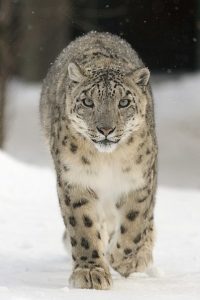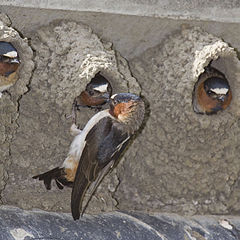
Snow Leopard
International Snow Leopard Day is today! Snow leopards live in mountain ranges in South Asia and Central Asia. Fewer than 10,000 snow leopards exist today, and that number is estimated to decline in the coming years. Listed as Vulnerable by the IUCN Red List, snow leopards have been killed by poaching. They have also seen their habitats declining. Smaller than other cats, snow leopards cannot roar. They are carnivores, preying on both wild and domesticated animals. They have adapted to mountainous, cold, and snowy conditions. They have thick fur; and their paws are large and covered with fur on the underside to traverse icy conditions. Interesting fact: their tails are unusally long and provide fat storage. The tail also has very long fur so that the tail can act as a blanket for the snow leopard’s face while the animal sleeps.


